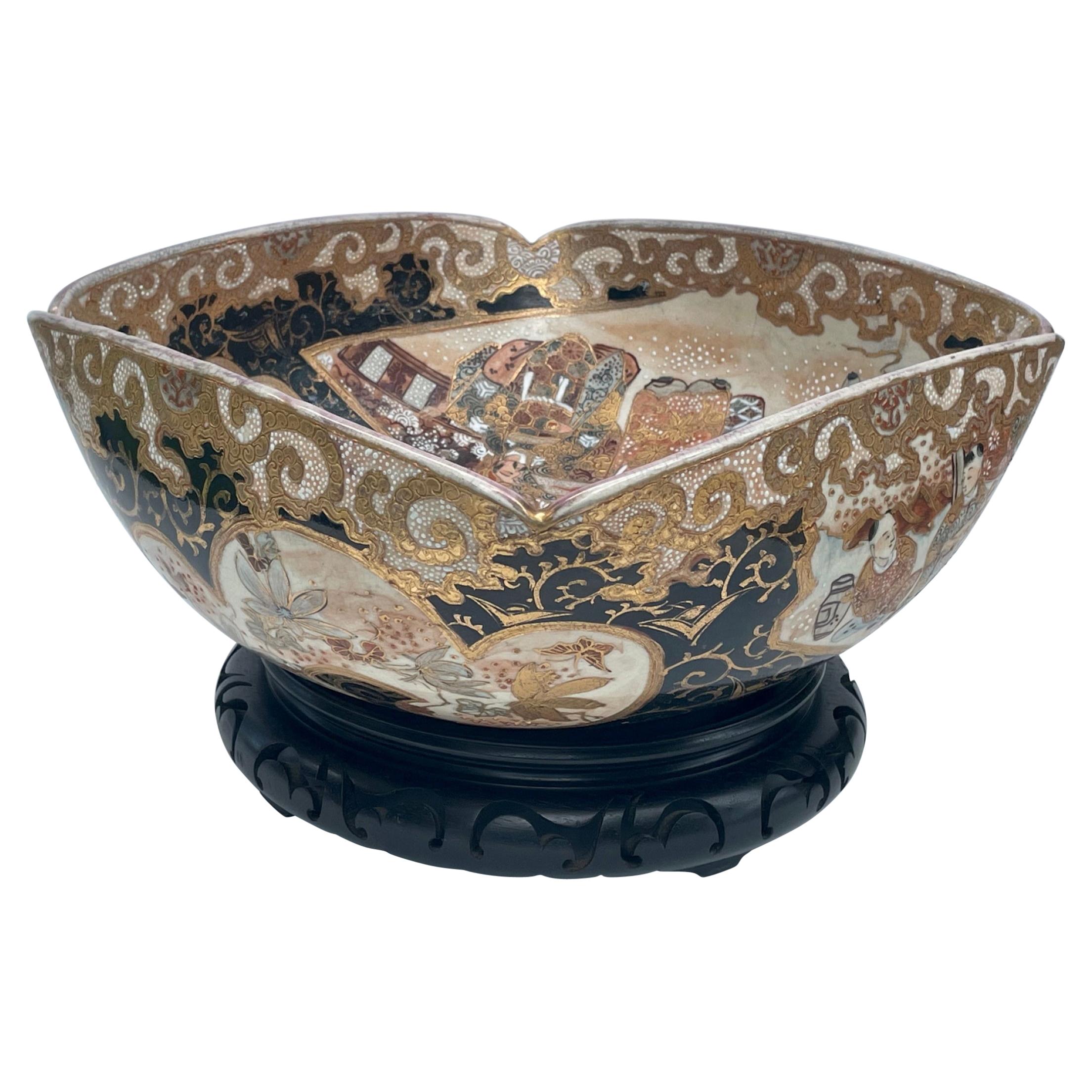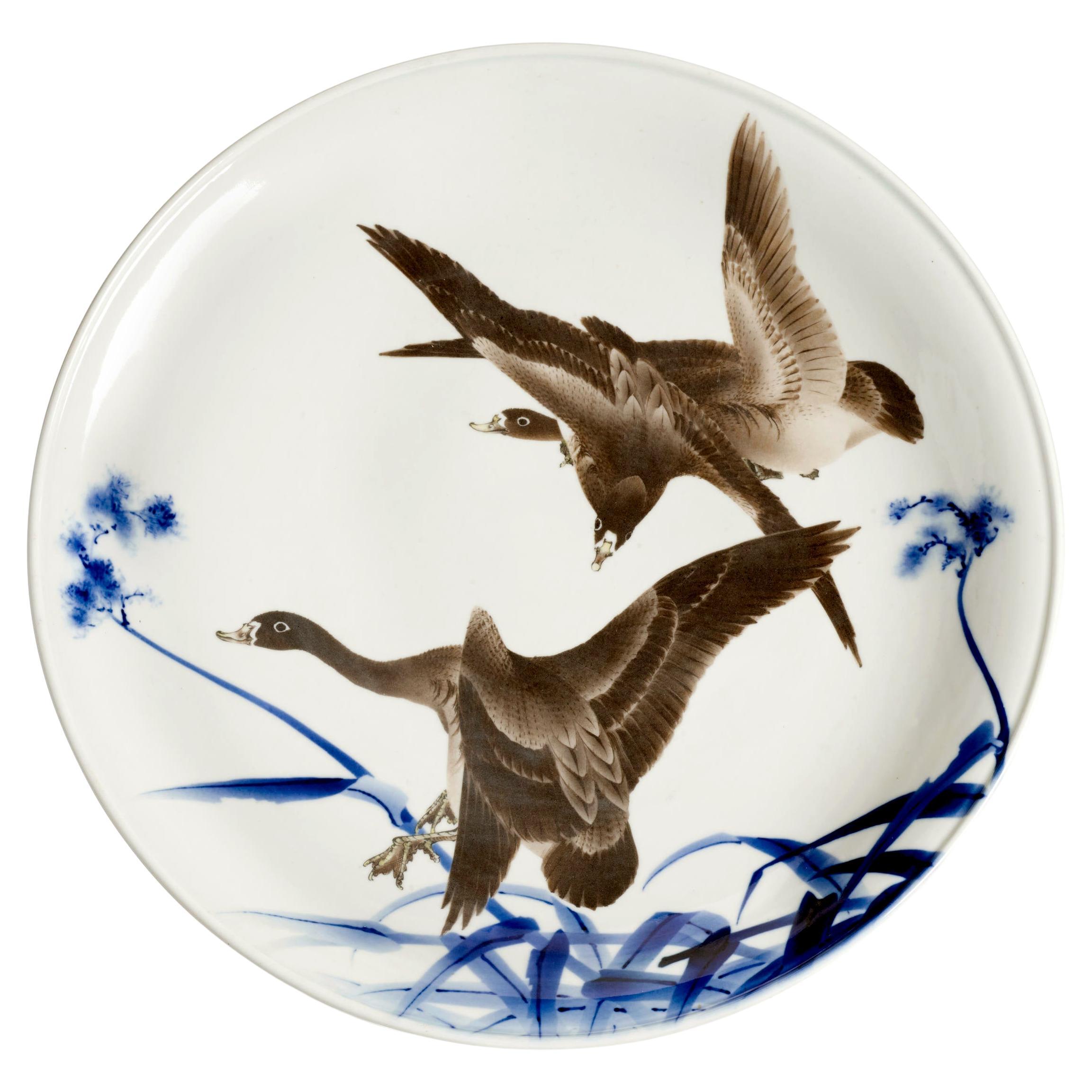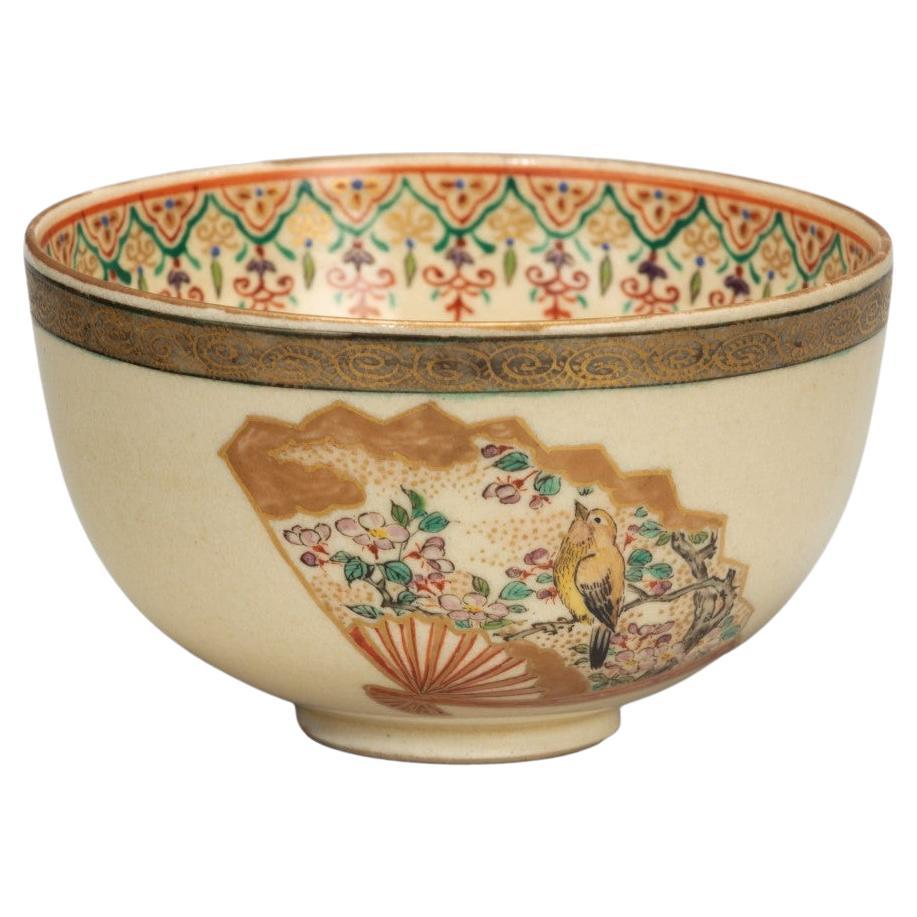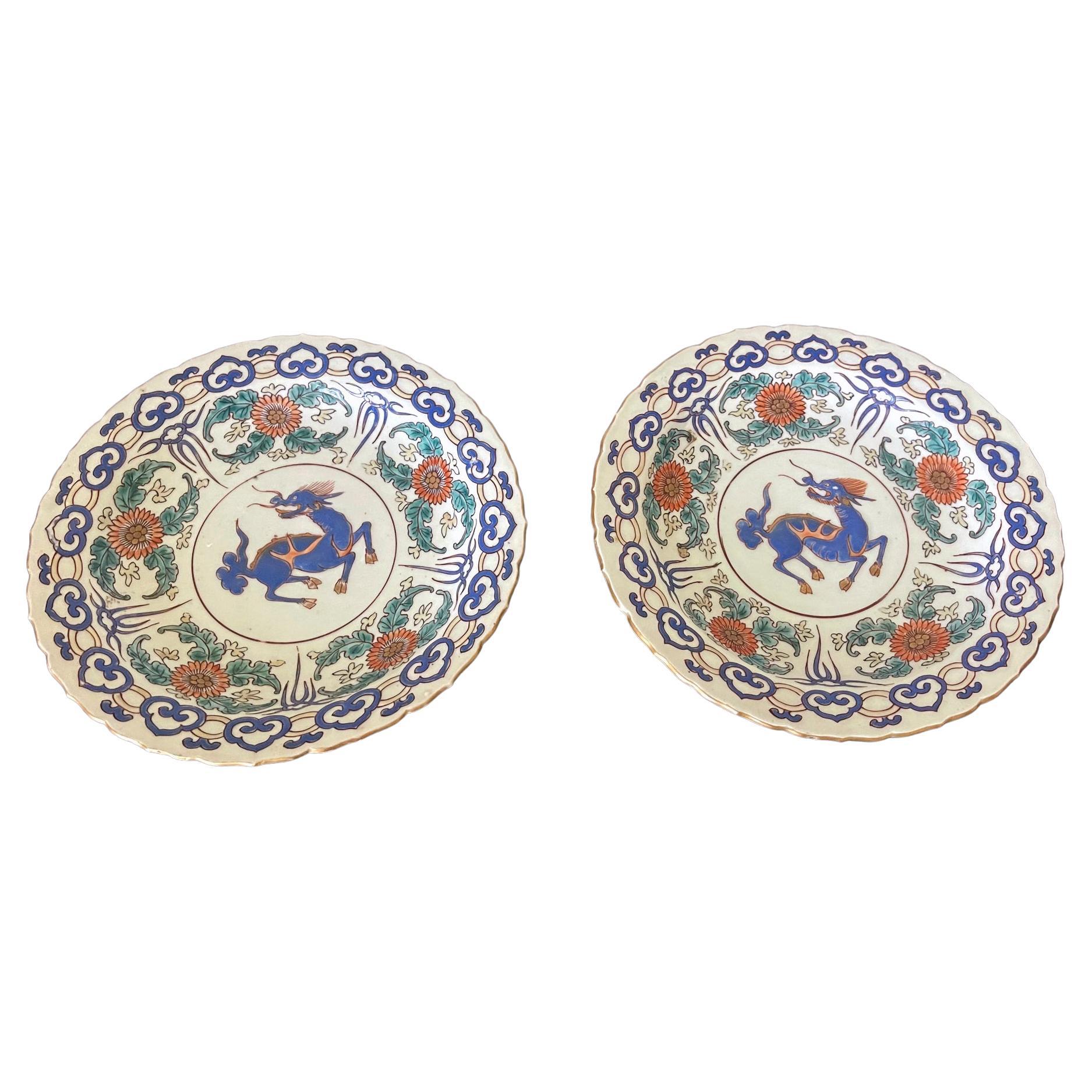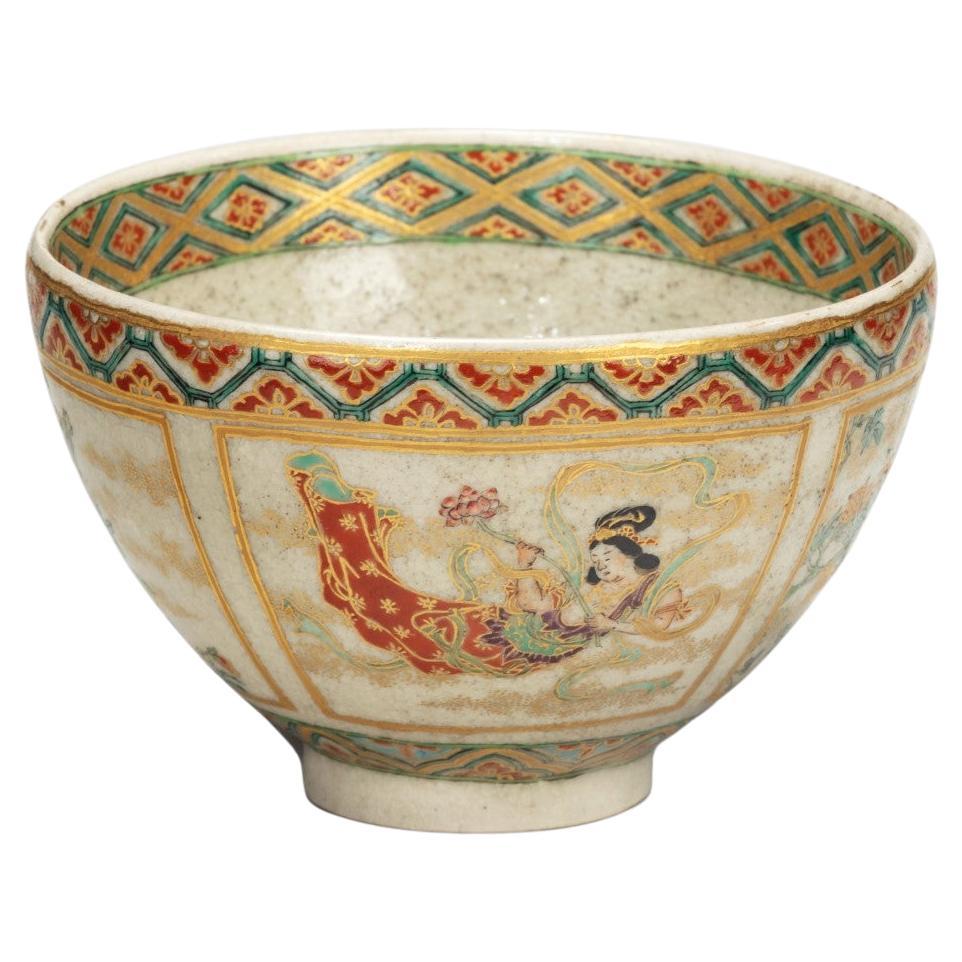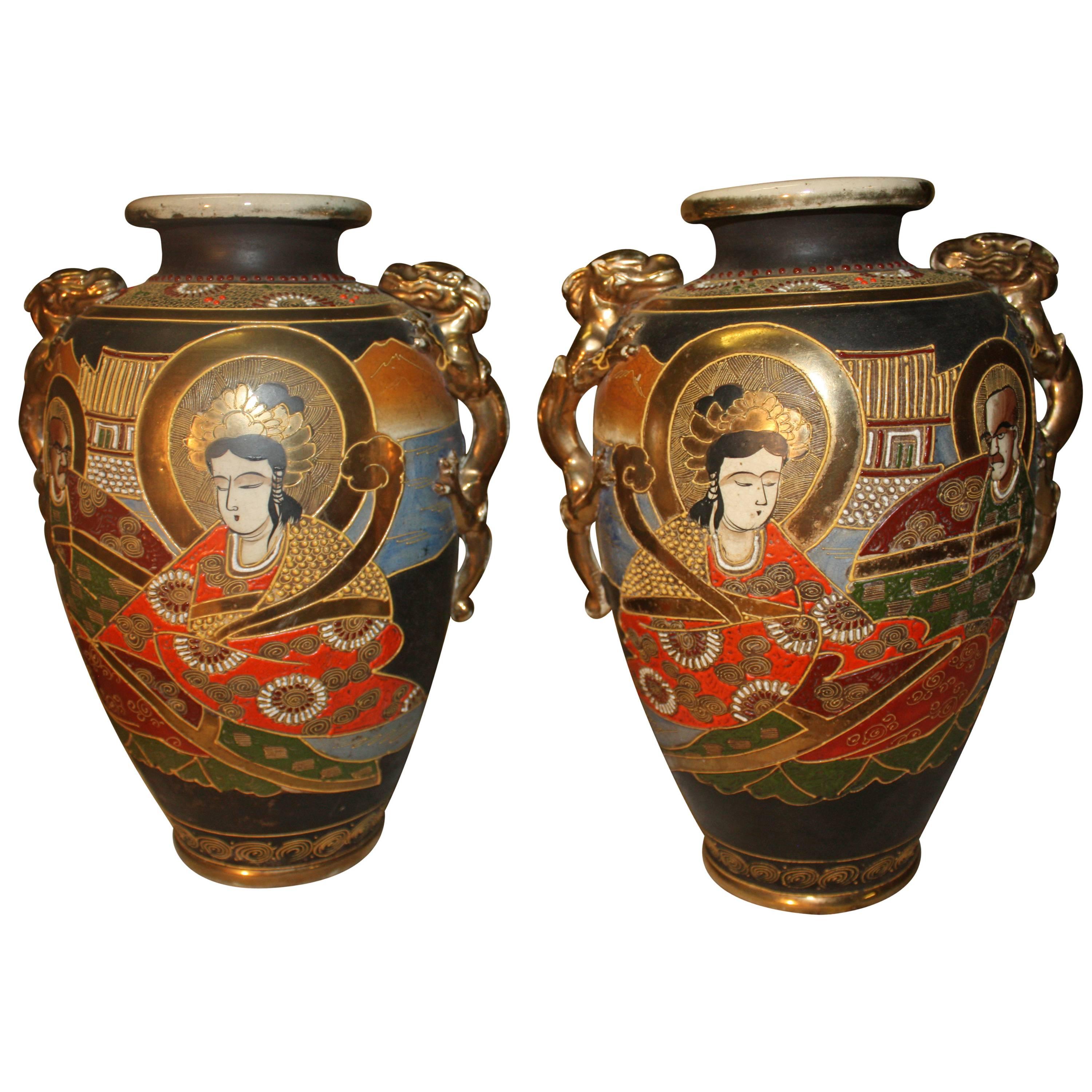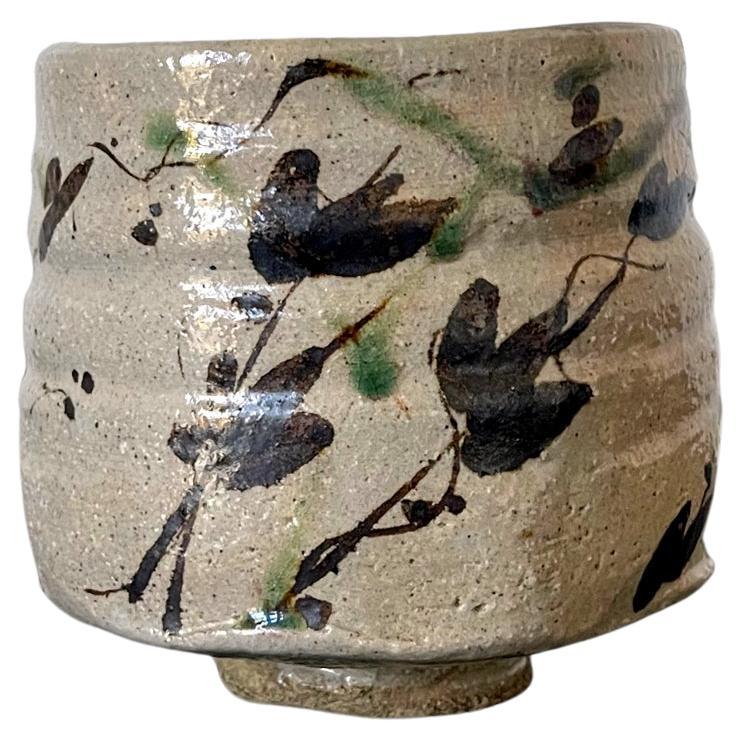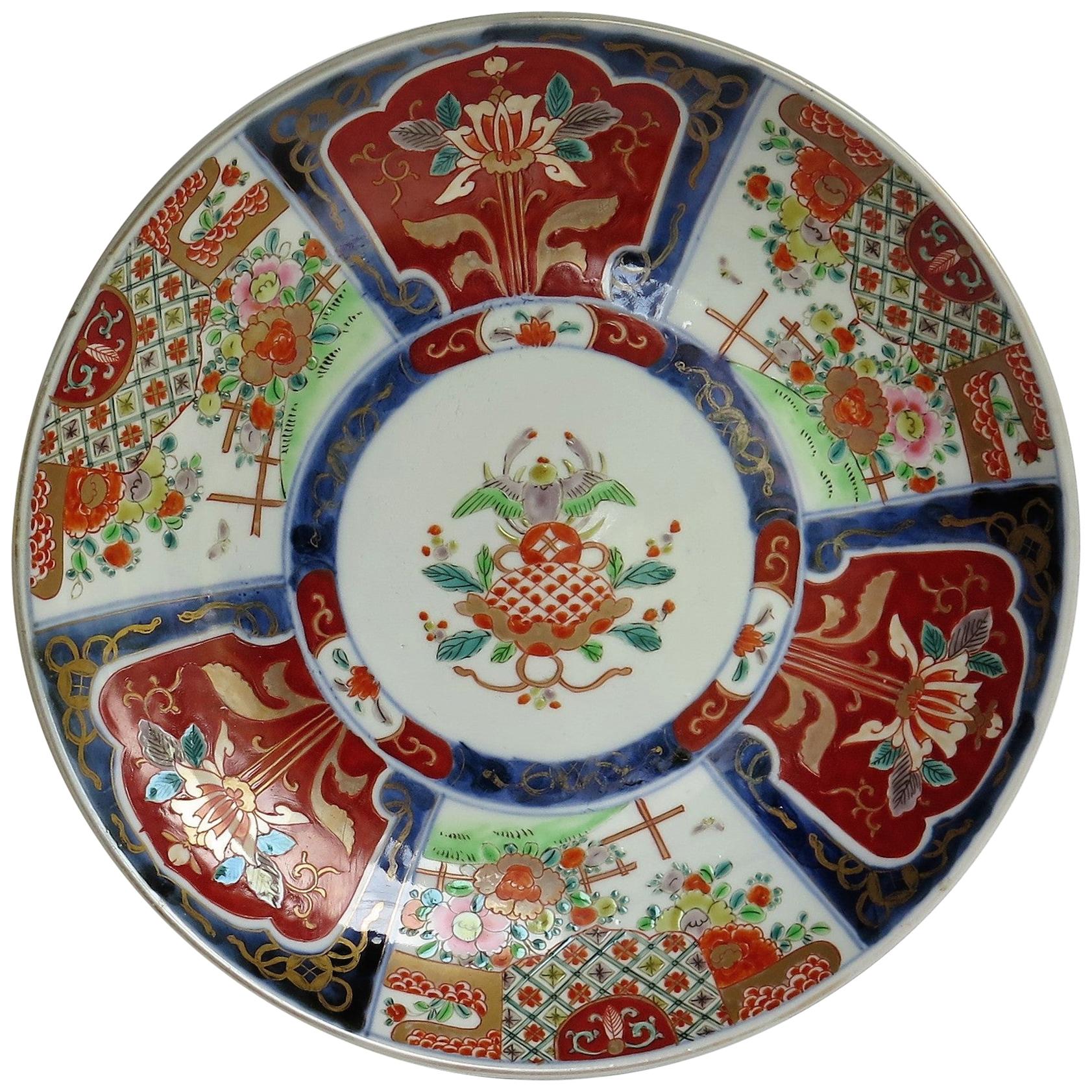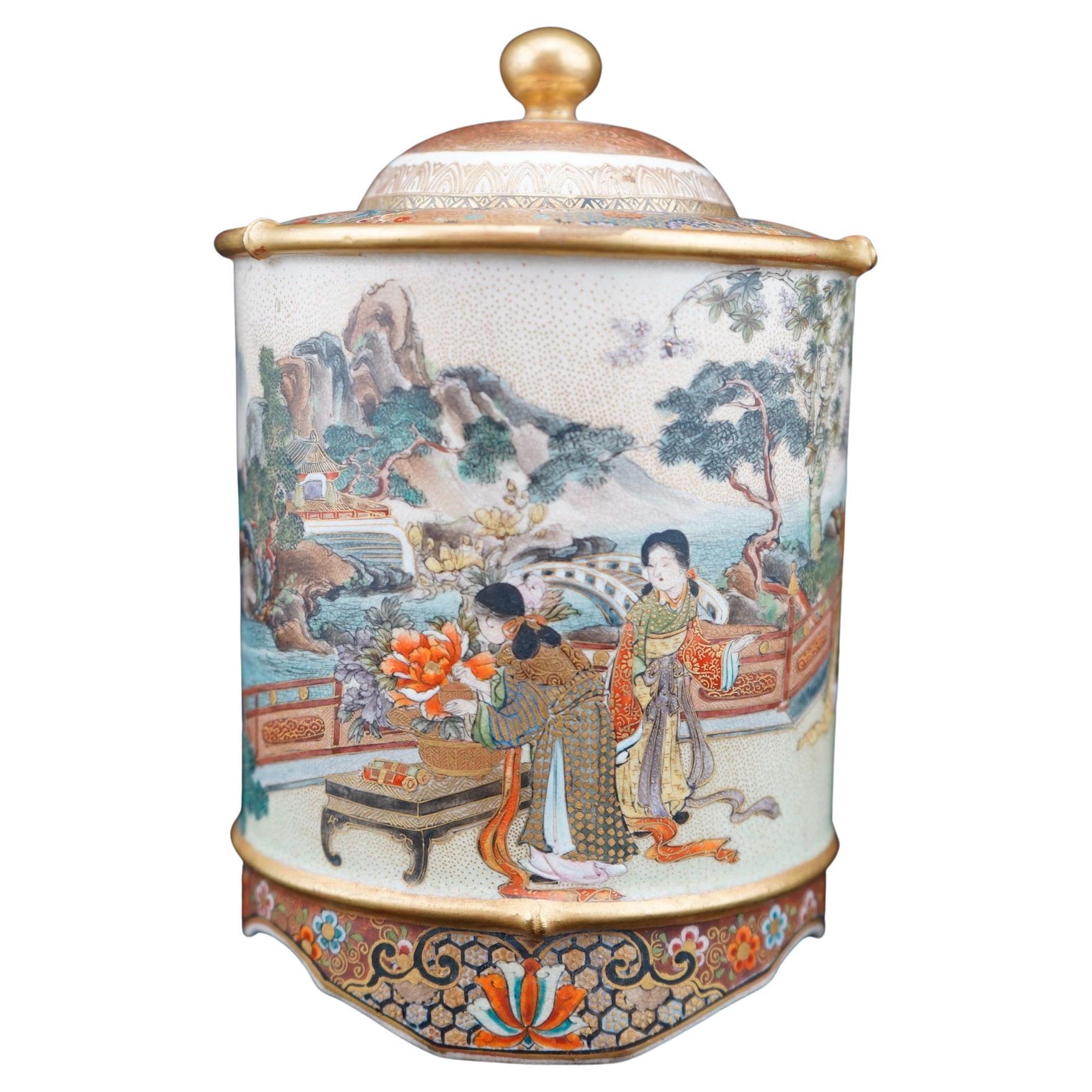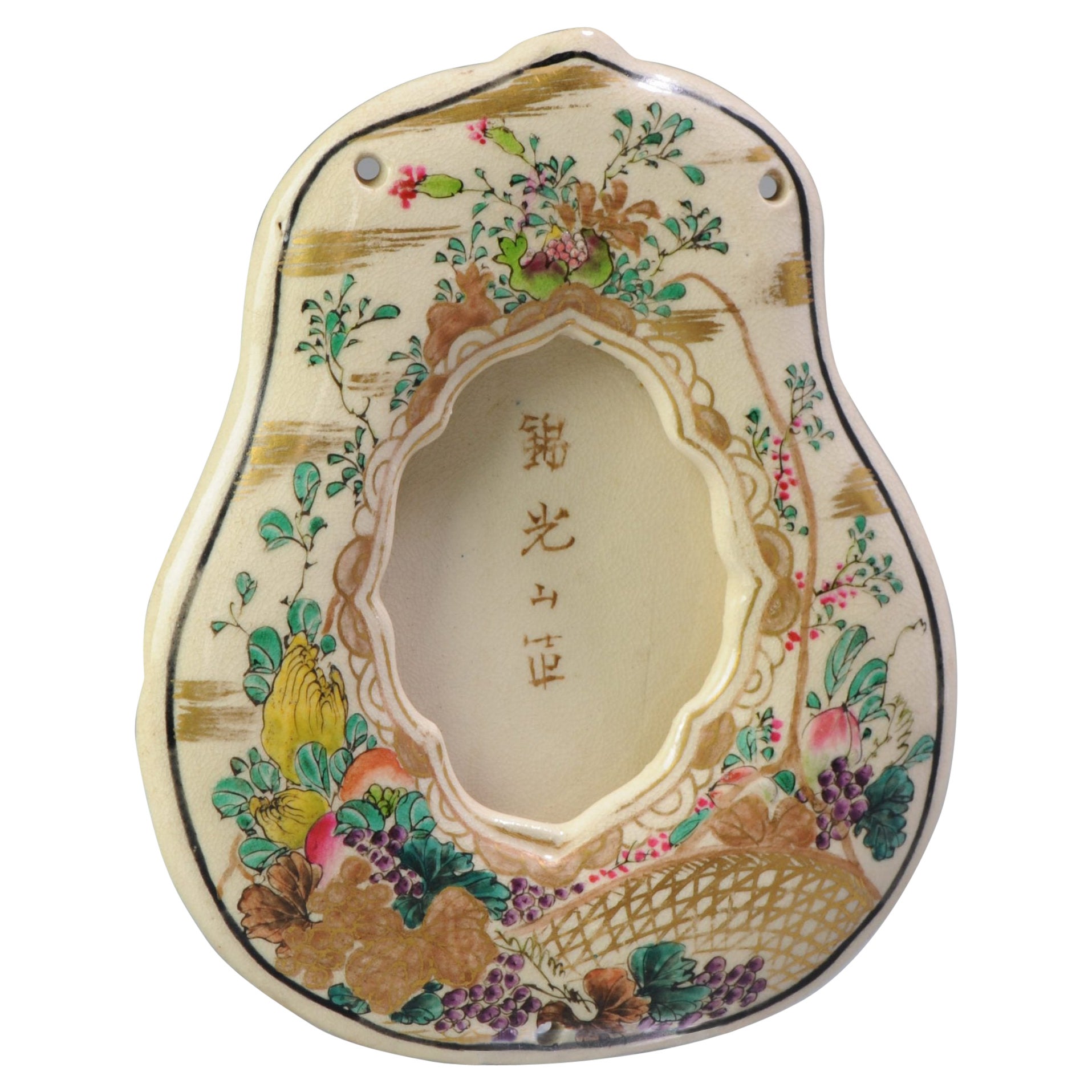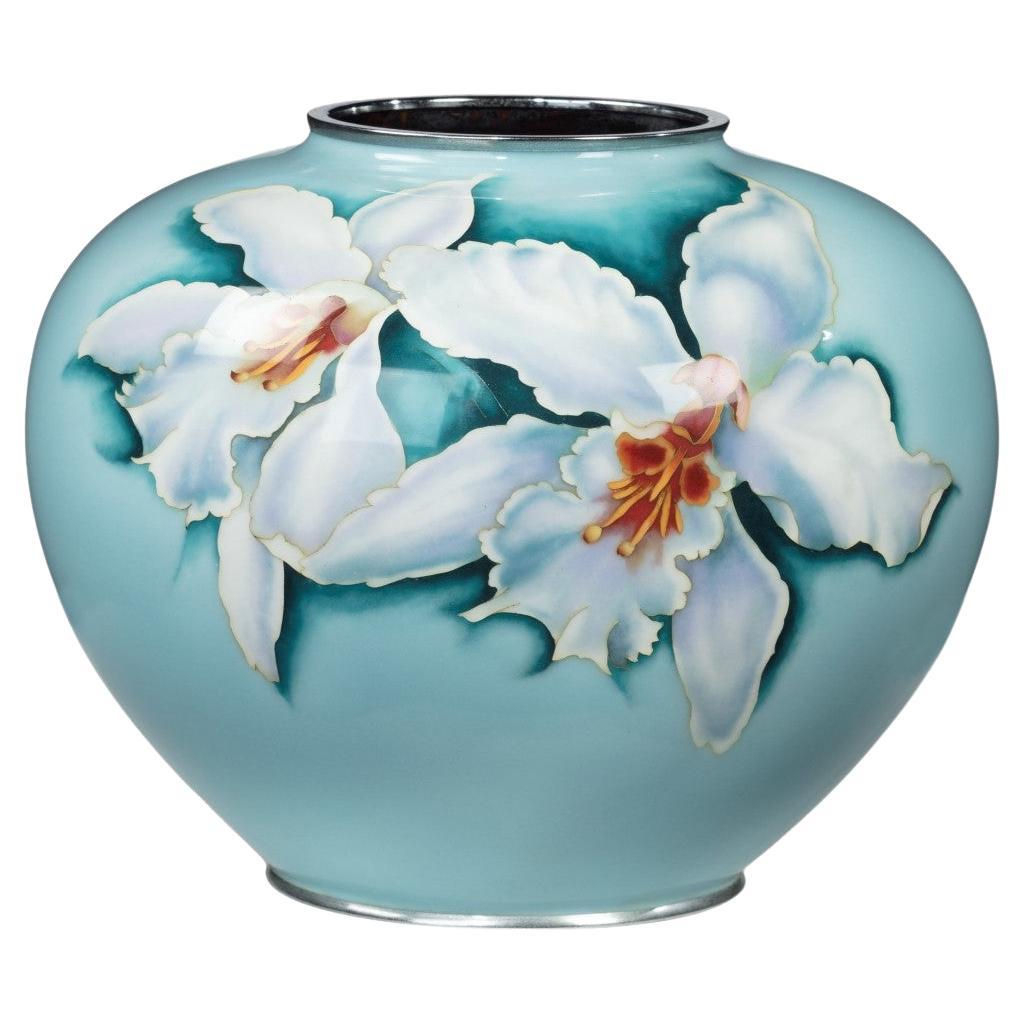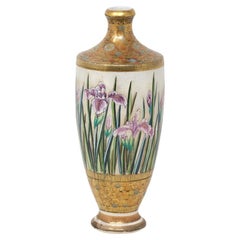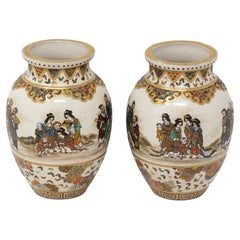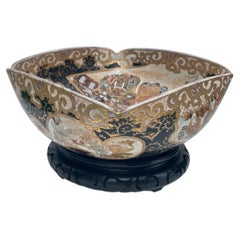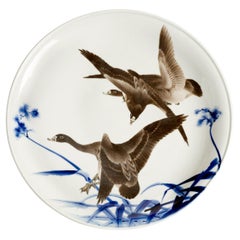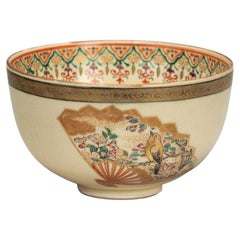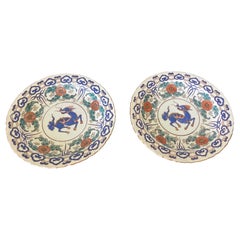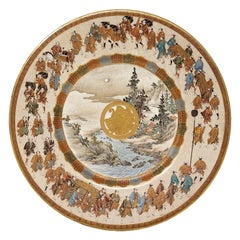
Japanese Satsuma Daimyo Procession Plate Seikozan
View Similar Items
Want more images or videos?
Request additional images or videos from the seller
1 of 19
Japanese Satsuma Daimyo Procession Plate Seikozan
About the Item
- Dimensions:Height: 1.19 in (3 cm)Diameter: 10.36 in (26.3 cm)
- Style:Meiji (Of the Period)
- Materials and Techniques:
- Place of Origin:
- Period:
- Date of Manufacture:circa 1890
- Condition:Repaired: Antique repair to one small section of the plate 3 o'clock as you look at the plate. See photos.
- Seller Location:Newark, GB
- Reference Number:Seller: WSUDD1stDibs: LU6971231177622
About the Seller
5.0
Gold Seller
Premium sellers maintaining a 4.3+ rating and 24-hour response times
Established in 2019
1stDibs seller since 2022
33 sales on 1stDibs
Authenticity Guarantee
In the unlikely event there’s an issue with an item’s authenticity, contact us within 1 year for a full refund. DetailsMoney-Back Guarantee
If your item is not as described, is damaged in transit, or does not arrive, contact us within 7 days for a full refund. Details24-Hour Cancellation
You have a 24-hour grace period in which to reconsider your purchase, with no questions asked.Vetted Professional Sellers
Our world-class sellers must adhere to strict standards for service and quality, maintaining the integrity of our listings.Price-Match Guarantee
If you find that a seller listed the same item for a lower price elsewhere, we’ll match it.Trusted Global Delivery
Our best-in-class carrier network provides specialized shipping options worldwide, including custom delivery.More From This Seller
View AllJapanese Meiji Period Satsuma Vase by Ryokuzan
Located in Newark, England
From our Japanese Satsuma Collection, we are delighted to offer this Japanese Satsuma Vase by Ryokuzan 緑山. The Satsuma vase of ovoid shape with a tapered body, circular foot rim, wai...
Category
Antique Early 1900s Japanese Meiji Ceramics
Materials
Ceramic, Earthenware, Pottery
Japanese Meiji Period (1868-1912) Satsuma Vase by Kinkozan
By Kinkozan
Located in Newark, England
JAPANESE SATSUMA PROCESSIONAL VASE
From our Japanese collection, we are delighted to introduce to the market this Japanese Satsuma Vase by Kinkozan. The vase with a compressed body ...
Category
Antique Late 19th Century Japanese Meiji Ceramics
Materials
Ceramic, Earthenware, Pottery
Japanese Earthenware Meiji Period Satsuma Iris Vase by Ryuzan
Located in Newark, England
Meiji Period (1868-1912)
From our Japanese collection, we are delighted to offer this Japanese Satsuma Iris Vase Painted by Ryuzan. The Japanese Satsuma vase of tall tapered form features a circular rolled foot rim, slightly pinched base with a tapered body and slightly bulbous opening. The vase is decorated with a central continuous band of bright iris flowers with various shades of green to the stems and beautiful violet petals. The central band is framed by greek key borders and honeycomb geometric patterns to the top and bottom. The vase is signed to the base Ryuzan 龍山 and dates to the Meiji Period (1868-1912) and the late 19th century circa 1895.
Satsuma ware is a type of earthenware pottery originating from the Satsuma province in Southern Kyushu, Japan’s third largest island.
Meiji Period was an era of Japanese history that spanned from 1868 to 1912. It was the first half of the Empire of Japan, when the Japanese people began to build a paradigm of a modern, industrialised nation state and emergent great power, influenced by Western countries and aesthetics. As a result of radically different ideas, the changes to Japan were profound and it affected the social structure, politics, economy, military, and foreign relations across the board. The period corresponded to the reign of Emperor Meiji and was preceded by the Keio era and was succeeded by the Taisho era.
Cultural Art during the Meiji Period was of particular interest to the government and they overhauled the art export market which in turn promoted Japanese arts via various world’s fairs, beginning in Vienna at the world fair in 1873. The government heavily funded the fairs and took an active role organising how Japan’s culture was presented to the world including creating a semi-public company named Kiritsu Kosho Kaisha (First Industrial Manufacturing Company). The Kiritsu Kosho Kaisha was used to promote and commercialise exports of Japanese art and established the Hakurankai Jimukyoku (Exhibition Bureau) to maintain quality standards. For the 1876 Centennial International Exhibition in Philadelphia, the Japanese government created a Centennial Office and sent a special envoy to secure space for the 30,000 items that would be displayed. The Imperial Household also took an active interest in arts and crafts, commissioning works by select artists to be given as gifts for foreign dignitaries further emphasising the high quality and importance of Japanese art. Just before the end of the 19th century in 1890, the Teishitsu Gigeiin (Artist to the Imperial Household) system was created to recognise distinguished artists. These artists were selected for their exceptionally high quality wares and talent in their own industry. Over a period of 54 years Seventy artists were appointed, amongst these were ceramicist Makuzu Kozan and cloisonné enamel artist...
Category
Antique Late 19th Century Japanese Meiji Ceramics
Materials
Earthenware
Japanese Antique Meiji Period Satsuma Vase Pair Hand Painted by Gyokuzan
Located in Newark, England
Painted with Continuous Scenes
From our Japanese collection, we are delighted to offer this Japanese Satsuma Vase Pair by Gyokuzan. The Satsuma vase pair of squat bulbous form with ...
Category
Antique Late 19th Century Japanese Meiji Ceramics
Materials
Ceramic, Pottery
Japanese Meiji Period (1868-1912) Satsuma Earthenware Vase Taizan for Hattori
Located in Newark, England
Meiji Period (1868-1912)
From our Japanese collection, we are delighted to offer Japanese Meiji Period Satsuma Vases. The Satsuma Vase of hexagonal form with a slight waisted neck and tight rounded rim is extensively decorated with multiple figures to two large scenes. The first scene features a beach with waves to the background and a plethora of figures including multiple geisha holding traditional Japanese wagasa’s. The second scene follows on from the first with a large building in the foreground holding figures on a large platform under a pagoda roof with a pagoda building in the background and further figures in the foreground. The scenes are framed by a full detailed border with gilt shapes, flowers amongst pink shaded backgrounds and butterflies around the neck. The Satsuma Vase is unusually signed Fine Art, Satsuma Ware, Dai Nippon (Great Japan), Hattori Made, Gosuido Works, Taizan Painted. 美術, サツマヤキ(薩摩焼), 大日本, 服部造, 五スイ堂工, 對山画 and dates to the Meiji Period (1868-1912) and the turn of the 20th century circa 1905.
Satsuma ware is a type of earthenware pottery originating from the Satsuma province in Southern Kyushu, Japan’s third largest island.
Wagasa are traditional Japanese umbrellas made of washi paper attached to a bamboo frame and treated to ensure it is waterproof.
Meiji Period was an era of Japanese history that spanned from 1868 to 1912. It was the first half of the Empire of Japan, when the Japanese people began to build a paradigm of a modern, industrialised nation state and emergent great power, influenced by Western countries and aesthetics. As a result of radically different ideas, the changes to Japan were profound and it affected the social structure, politics, economy, military, and foreign relations across the board. The period corresponded to the reign of Emperor Meiji and was preceded by the Keio era and was succeeded by the Taisho era.
Cultural Art during the Meiji Period was of particular interest to the government and they overhauled the art export market which in turn promoted Japanese arts via various world’s fairs, beginning in Vienna at the world fair in 1873. The government heavily funded the fairs and took an active role organising how Japan’s culture was presented to the world including creating a semi-public company named Kiritsu Kosho Kaisha (First Industrial Manufacturing Company). The Kiritsu Kosho Kaisha was used to promote and commercialise exports of Japanese art and established the Hakurankai Jimukyoku (Exhibition Bureau) to maintain quality standards. For the 1876 Centennial International Exhibition in Philadelphia, the Japanese government created a Centennial Office and sent a special envoy to secure space for the 30,000 items that would be displayed. The Imperial Household also took an active interest in arts and crafts, commissioning works by select artists to be given as gifts for foreign dignitaries further emphasising the high quality and importance of Japanese art. Just before the end of the 19th century in 1890, the Teishitsu Gigeiin (Artist to the Imperial Household) system was created to recognise distinguished artists. These artists were selected for their exceptionally high quality wares and talent in their own industry. Over a period of 54 years Seventy artists were appointed, amongst these were ceramicist Makuzu Kozan and cloisonné enamel artist...
Category
Antique Early 1900s Japanese Meiji Ceramics
Materials
Earthenware, Pottery
Japanese Meiji Period (1868-1912) Satsuma Kogo Incense Box by Taizan Yohei
By Taizan Yohei IX
Located in Newark, England
DEPICTING BISHAMON ONE OF THE SEVEN LUCKY GODS
From our Japanese Satsuma collection, we are delighted to offer this Japanese Satsuma Kogo by Taizan. The Satsuma Kogo of petit circul...
Category
Antique Early 1900s Japanese Meiji Ceramics
Materials
Ceramic, Earthenware, Pottery
You May Also Like
Japanese Meiji Period Satsuma Large Square Bowl Centerpiece
By Satsuma
Located in Vero Beach, FL
Japanese Meiji Period Satsuma large square bowl
Antique early Meiji Period 15" square with scalloped rim Satsuma bowl. Highly unusual and finely painted. ...
Category
Antique 19th Century Japanese Meiji Ceramics
Materials
Ceramic
$4,160 Sale Price
20% Off
Rare Large Japanese Porcelain Presentation Plate Makuzu Kozan
By Makuzu Kozan
Located in Atlanta, GA
A large presentation plate with striking pictorial design from the studio of Japanese Potter Makuzu Kozan. Also known as Miyagawa Kozan (1842–1916),...
Category
Early 20th Century Japanese Meiji Ceramics
Materials
Porcelain
Small Satsuma Earthenware Bowl
Located in Lymington, Hampshire
A small Satsuma earthenware bowl, painted in overglaze enamels and gilt with three fans. Japanese, circa 1900.
Measures: Height 2 inches Diamete...
Category
Antique Early 1900s Japanese Ceramics
Materials
Ceramic
Pair Antique Japanese Artia Ceramic Cabinet Plates
By Arita
Located in Atlanta, GA
A pair of Japanese decorative ceramic plates, made in Arita for export market circa 17-18th century. The cabinet-display dishes feature lotus-petal gilt rim and a lavish tricolor ene...
Category
Antique 18th Century Japanese Japonisme Ceramics
Materials
Ceramic
Small Satsuma Earthenware Tea Bowl
Located in Lymington, Hampshire
A small Satsuma earthenware tea bowl, the speckled greyish body decorated with four panels of alternating bijinand flowers, painted in overglaze en...
Category
Antique Early 1900s Japanese Ceramics
Materials
Ceramic
Pair of 19th Century "Satsuma" Vases
Located in Stockbridge, GA
Pair of 19th century Satsuma vases, Japan 19th century.
Category
Antique Late 19th Century Japanese Ceramics
Materials
Ceramic
$3,100 / set
Recently Viewed
View AllMore Ways To Browse
Greek Key Ceramic
Ceramic Plates Greek
Red Ceramic Horse
Imperial Clocks
Horizontal Clock
Antique Station Clocks
Imperial Satsuma
Edo Satsuma
Warrior Clock
16th Century Clocks
Shogun Warriors
Hatcher Cargo
Japanese Bizen Ware Pottery
Japanese Imperial Kimono
Korea Tea Bowl
Tongzhi Porcelain
Antique Chinese Ceramic Pillows
Antique Porcelain Snuff Bottles
